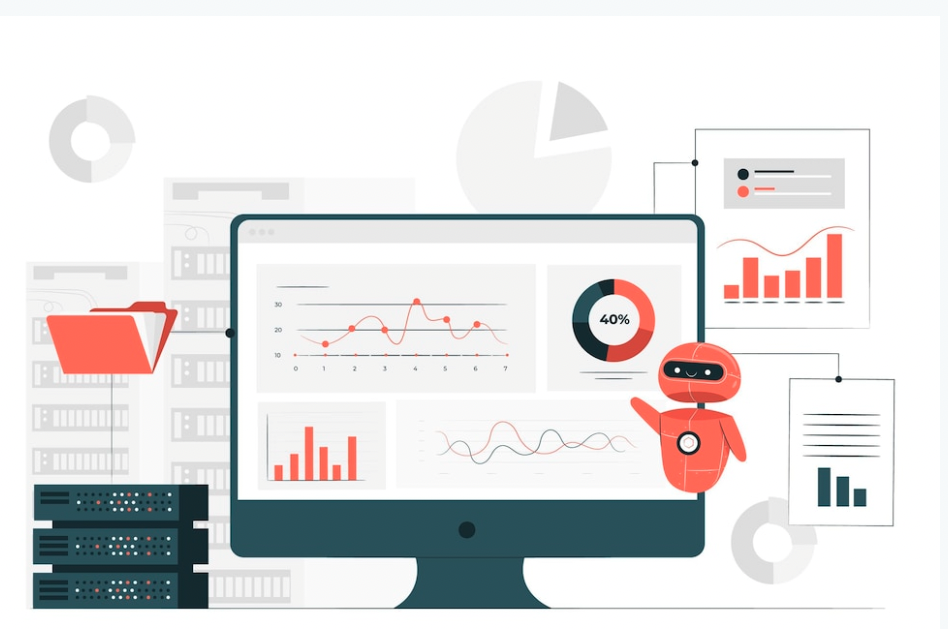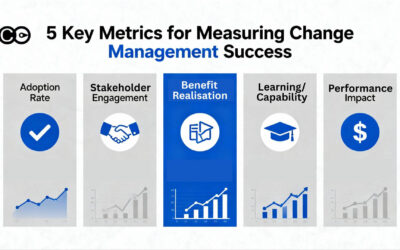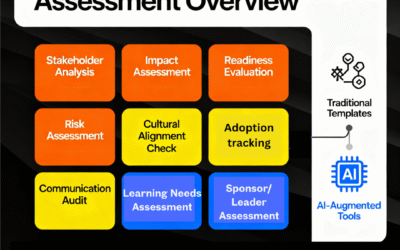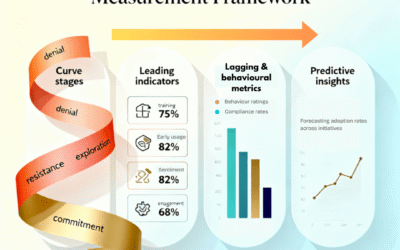Measuring change has become increasingly popular within the change management discipline. It used to be that change practitioners were more comfortable thinking and proposing that they are all about people, and therefore people factors are not hard and easy to measure. Areas such as change leadership, training, communication, and engagement were often the key tenants of a change professional’s key focus areas.
With increasing digitisation and focus on data and metrics, change management is also not exempt from this trend. Business leaders are now demanding that change management, just like most other business disciplines, demonstrate their value and work outcome through measurable metrics.
Using change management software to measure change
Even before the more recent trend of focusing on various aspects of change, change management software products have emerged. 10 years, when the basic idea for The Change Compass started, there was only 1-2 change management software in the market. Several years after that, there started to be 2-4 product offerings emerging in the marketplace.
Over the years, many of these software products have closed shop, or been sold to other companies. At the time, the need for change management software to measure change was not strong in the marketplace. It was perhaps an immature market where a lot of practitioners saw little need.
Types of change management software
There are many types of change management software. First, let’s spell out that we are not talking about technical change management software such as ITIL or technical change tracking software. The focus of this article is on organisational change management software.
The different types of change management software include:
- Change project adoption measurement – Such as ChangeTracking that focuses on measuring the extent to which the project is progressing on track from a stakeholder perception and adoption angle
- Change project implementation measurement – Such as Change Automator that provides a platform to automate project change delivery work that change practitioners focus on in capturing change deliverables, and overall change reporting and tracking
- Change portfolio measurement – Such as The Change Compass that offers data visualisation for a change portfolio (collection of change projects) to help make portfolio level decisions on prioritisation, sequencing and delivery risks
- Other organisational measurement – Such as OrgMapper that provides organisational network analysis maps and networks to understand relationship networks across individuals and groups
Data capture and automation
One of the key value propositions of a digital change management software is to provide some levels of automation in the capture of change management data, so that the data may be easily analysed and visualised. However, in our analysis of available change management software in the market, we found that there is a wide range of various levels of automation. Some have almost zero automation, whilst others have significant levels of automation.
In searching for an effective digital change management tool, ensure that you take into account the following in data capture:
- To what extent is the data capture flexible and can be easily tailored
- What are the system features to automate data entry?
- Is there a range of data analytics from the data entered
- Is the tool just a data depository without insight generation and data analysis features
- Is the data capture too categorical? E.g. Agile vs Waterfall? And how useful are the data fields in terms of making decisions or generating insights?
Here is an example of automation from Change Automator where stakeholder data can be pulled from the company’s Microsoft Azure system to reduce the significant time required to input stakeholder details.
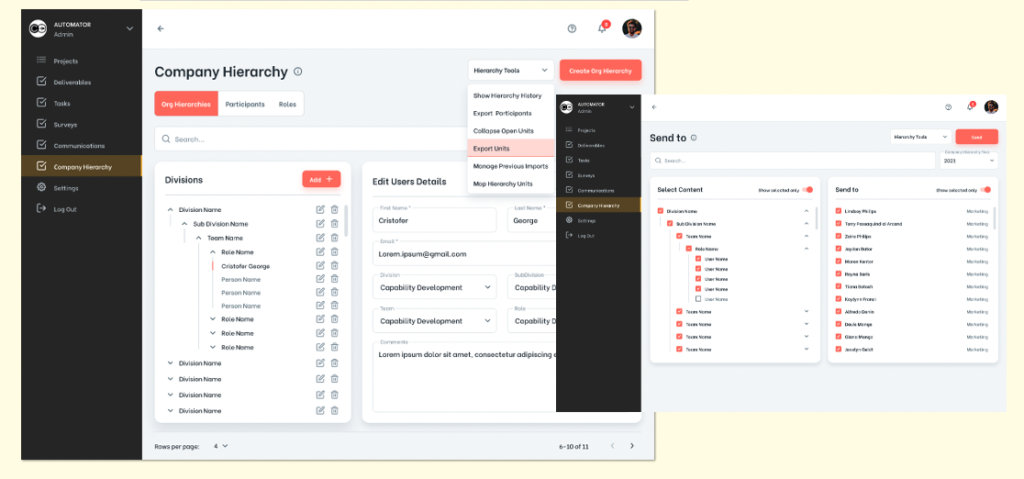
Data analysis & reporting
The power of digital software is that it can easily calculate, track, and visually show the metrics that we are focused on. Looking at raw data is meaningless if it cannot be turned into highly engaging and meaningful charts that generate an understanding of some kind of insight into the organisational situation with regard to initiatives.
Some change management software reports simple figures that may provide limited usefulness. For example, the number of impacts affecting each stakeholder group may be interesting but there is not much we can do with the data. This is because the number of impacts doesn’t indicate the overall severity or volume of the impacts.
Data visualisation should also support ‘drill-through’, where the user is able to click on the chart and drill into more details about that particular part of the data to better understand what contributes to it. This is a critical part of data analysis and understanding the story that the data is telling us.
Effective data visualization
Data visualisation formats are also critical. With the wrong data visualisation design, it becomes very difficult for people to understand and interpret the data. Ideally, the user should see very clearly what the data is showing them visually. For example, pie charts have become very popular in reporting. However, pie charts are only useful to contrast a few different data points. When there are too many data points and the data is too similar, the human eye finds it difficult to compare and contrast any differences.
Effective data visualisation should also allow the user to highlight a part of the data to create a visual emphasise to support a particular point. Making the visuals simple for the user is ultimately the most important part of chart design. The more complex it is, the harder it is for you to get your point across to your stakeholders.
To learn more about designing the right data visualisation to create optimal impact check out our infographic.
Insight generation & decision making
Ultimately, the change management software should be designed to provide insight into what is going to happen to the impacted people (whether it be employees, customers, or partners). The data should help you zoom into where is the source of the problem or the risk area, what the risk is, and potentially how to make a recommendation to resolve it. The drill-through capability is critical to support the insight generation.
The data visualisation should also directly support you or your business stakeholders to make business decisions on change. If the data was just ‘interesting’ it will not have much impact and after a while business stakeholders will lose their interest in the data. Instead, data and reporting should form a core part of regular business decision-making. Decision making using change data can be:
- Within a project in making roll out and implementation decisions
- Within a portfolio in making prioritisation and sequencing decisions
- Within a business unit in making capacity prioritisation, business readiness and operational planning decisions
- Across the enterprise in PMO and change governance settings on prioritisation, sequencing, benefit realisation and enterprise planning
Tailoring of data visualization
For those users who are more advanced with change analytics, there may be stakeholder requests to tailor charts in different formats. It could also be that for a specific organisational scenario, the user would like to create a tailored chart to show the specific problem that is not represented in existing off-the-shelf report designs.
In this case, the software should have the flexibility to allow these users to select their desired data fields and even types of charts that they want to work with to design the tailored chart without too much effort, and ideally not from scratch.
Here is an example from Change Automator where the user is able to easily tailor a chart by selecting the data fields, experiment with different charting, to come up with the ideal chart to influence stakeholders.
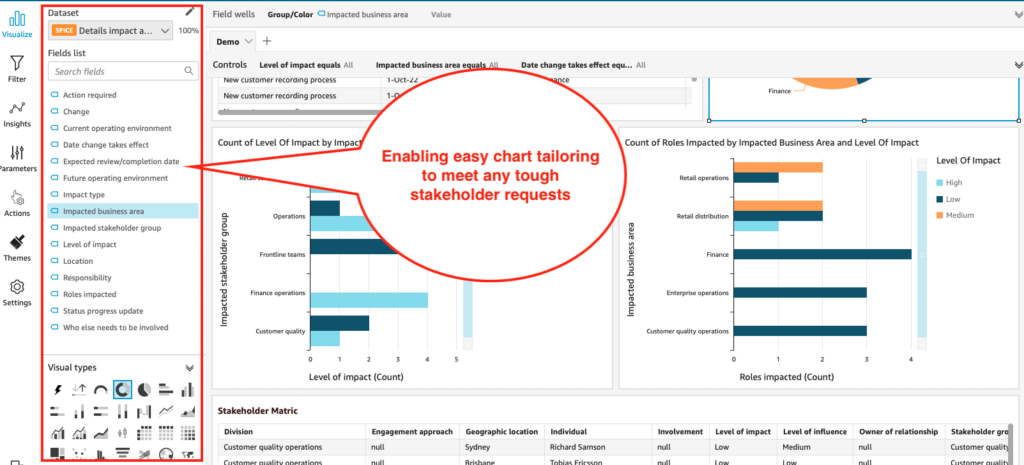
Trend analysis and predictive analysis through machine learning
Reading and interpreting individual charts can yield significant insights. However, the real power of analytics is to look at historical trends and even predict future trends based on data. Therefore, having the right data, over time, can create significant value. This is why investing in data is so critical, and why not just technology companies, but most industries are focused on digitising and leveraging the power of data.
The same thing applies to change analytics and change data. Invest in change data and the benefits can be enormous. By better understanding data trends with the assistance of machine learning, the system can highlight and draw your attention to critical observations and findings that you may have skipped.
With sufficient data, you’re also able to utilise machine learning to generate predictive data trends. Some examples of situations in which this can provide significant value include:
- Typical times in which the business unit or team are busy with changes or operational challenges
- Typically how initiatives of different complexities take to adopt and embed within the business
- Typical delays in forecasted versus actual change implementation timeline
- Stakeholder groups that tend to show the highest resistance or lowest engagement to initiatives
- Predicted time it takes to realise targeted benefits
Investing in a change management software can create significant value for your organisation by measuring change and making it visual and easier to understand. Selecting the right tool is critical since there is a variety of options on the market. Examine closely the functionalities and how they enable you to make business decisions since not all charts may be useful. With the right software support, you will be able to not only tell a compelling, data-backed story of what is going to happen to the business, but also the logical recommendations that stakeholders find hard to dispute.
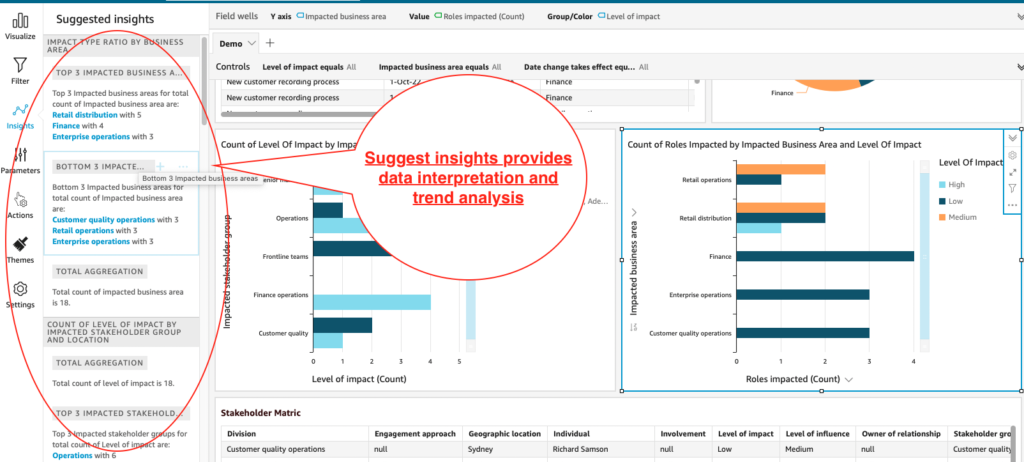
To read more about measuring change visit our Ultimate Guide to Measuring Change article.
